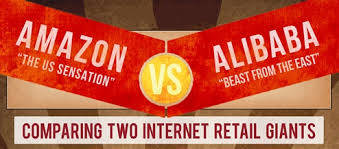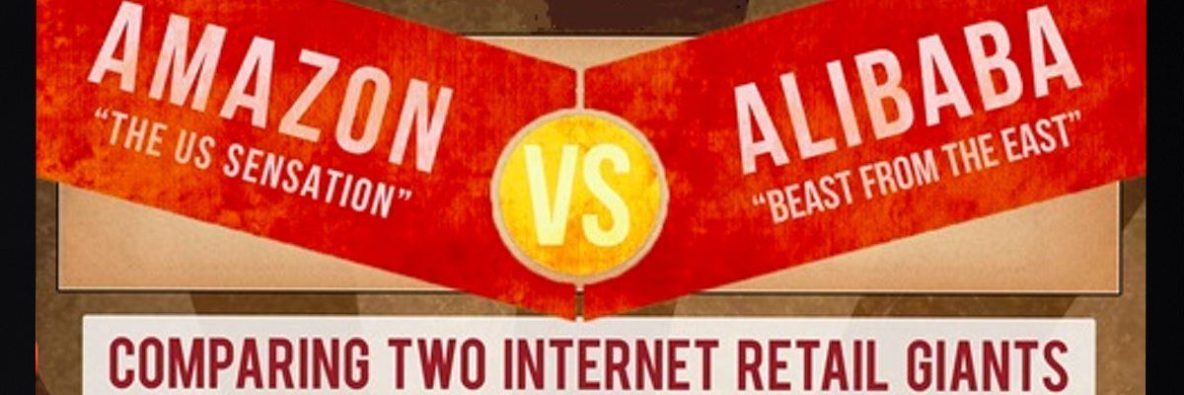

Two heavyweights slug it out
Alibaba has been coming off from its first-day jump of 34 per cent, as investors in the US re-considered their weightings and how much growth was priced in. A run-around on the commentary revealed some variance in views, but very little in terms of hard data on the investment case. Here then is a deeper dive into BABA, with some comparisons to that other retail behemoth, Amazon.
First, though, it is worth touching on the actual structure through which investors gain exposure to BABA – the variable interest entity, or VIE. Governance folk hate this kind of structure, since it isn’t a share with a vote in Alibaba itself, but a Cayman Islands company with a contractual arrangement to pass profits and dividends back to investors in the US-listed BABA. The structure is like this because China broadly restricts foreign investment (although this too is being liberalised). It’s not the most transparent vehicle in the world, and some big investors would be precluded from taking a holding because their mandate would prohibit this kind of derivative structure. More broadly, however, the correct way to think about this is in the context of the run of commentary coming from the Chinese Politburo (this was clear at the Boao economic forum in China earlier this year) which is actively encouraging investment in companies like Alibaba (and Tencent and Baidu). The most important concern would arise if for any reasons the China/US relationship soured.
Setting this aside to concentrate on the business metrics, Alibaba is quite a different beast to Amazon. It derives its sales on the percentage of gross merchandise volume (or GMV) that it sells. GMV for the most recent quarter (to 30 June 2014) was $US81.7 billion ($92.5 billion) – up a whopping 45 per cent a year. I expect there to be some lumpiness in these figures, but the mere fact that a company can get to an annualised rate of $US327 billion in sales at 45 per cent growth is staggering. (Walmart sales are $US473 billion).
BABA does not report its quarterly sales at the GMV level of $US81.7 billion. Rather it reports the actual 3.1 per cent commission received of $US2.54 billion. Using the Bloomberg revenue forecast for the next four quarters puts revenue for the coming year at $US12.65 billion (and so a GMV forecast of $US408 billion).
Old-fashioned exchange
BABA is in fact an old-fashioned exchange. A very big one, but an exchange nevertheless – the buyers go where the sellers are, and the sellers go where the buyers are. Once established, these models are very hard to break. Carsales.com is one of these, so is the New York Stock Exchange.
And here lies the major difference between BABA and Amazon. Amazon isn’t just an exchange, it is a retailer first in the classic sense of the word, with inventory and distribution centres, and a slew of home-grown products (like the Kindle e-reader and the Fire phone, as well as its cloud server business) that have reported very mixed success. What this means is that it must report the revenue on these products rather than just the commission on sales that BABA reports.
But even that is not the whole story. Having built this retail infrastructure, Amazon has, Alibaba-like, turned to overlaying a third party exchange-type business into its core retail offering. Interestingly, this appears to be one of the fastest growing parts of the business, a fact which will not be lost on Alibaba investors.
What this means is that if we take the third party revenue for Amazon, and then annualise it, revenue comes out at much closer to $US200 billion (this is something of an educated guess, since Amazon doesn’t break out its GMV, as Alibaba does). Using the same measure for Alibaba, revenue in the past year was $US296 billion. We can say pretty much for certain that Alibaba is the largest e-commerce retailer in the world by sales, with Amazon the second, although on the reported revenue Alibaba looks like it is only half the size of Amazon. Walmart is the biggest, but not growing anywhere near as fast.
In terms of profit, Alibaba made normalised EBITDA of $US1.3 billion in the quarter, while Amazon made $US1.09 billion. Alibaba’s growth in EBITDA was 40.6 per cent against Amazon’s 31 per cent.
Meaningful divergence
It is from here that the divergence in strategy between the two companies starts to be meaningful.
Alibaba will increasingly attempt to compete in international markets, where it will be a real threat to Amazon. As an exchange only, BABA will be free to push its presence without a significant balance sheet drain, something that has cost Amazon in recent years as its international expansion has used up balance sheet resources but not gained significant traction.
BABA looks like it has a much more significant growth path ahead of it. Even without considering new markets such as Brazil, China is a very underdeveloped retail opportunity – at 0.6 of a square metre per person, Chinese retail space is around 20 per cent of that in the US. Internet penetration in China is around 46 per cent, at 618 million people on a base of 1.3 billion people, compared with 82 per cent in the US. And online shopper penetration as a percentage of total internet users in China is 49 per cent in China, while in the US it is 64 per cent.
What happens in the year to June 2015 if BABA holds this growth rate? If we assume that costs remain the same (which is largely correct, since BABA is a fixed cost business, meaning that the amount of servers, staff and general expenses would not change materially on double the revenue) then the numbers start to really mess with your head. BABA EBITDA would jump from an annualised level of $US5.5 billion to $US8 billion – up 45 per cent.
At that point, BABA would be 27-times EBITDA forecast earnings for the coming 12 months. If growth continues at that rate, the multiple drops to 15.8 times the following year. Should it continue? Remember, Chinese internet penetration is roughly half that of the US and Europe, with active buyers of 279 million on a population base of 1.3 billion.
I don’t really expect these numbers to be exact. As noted, growth will bob around, costs will too, so the end results will vary. But this is where the company is headed.
For the record, other exchanges like Carsales has a forward EBITDA multiple of 15.6 times, while eBay is at 10.7 times. Amazon is at 24.1 times. In this context, we begin to see just how sweet BABA is. And why investors have been selling Amazon to get into it.
BABA’s clean “exchange” model is outgrowing Amazon on key metrics. The Amazon strategy can still work – coming up with must have products and services (like its ebooks and Prime retail strategy) could generate higher sales over time, and an better margins, and once the retail distribution build is over Amazon stops having to expense so much of its start-up costs.
Meanwhile, if you are in the market for a gross of white cotton t-shirts, try either of them. But if you need a used Boeing 737, only Alibaba can help. In fact, there’s a whole fleet of them. On Amazon, you will be stuck with a resin model only.
Originally published on BRW.
Share this Post


